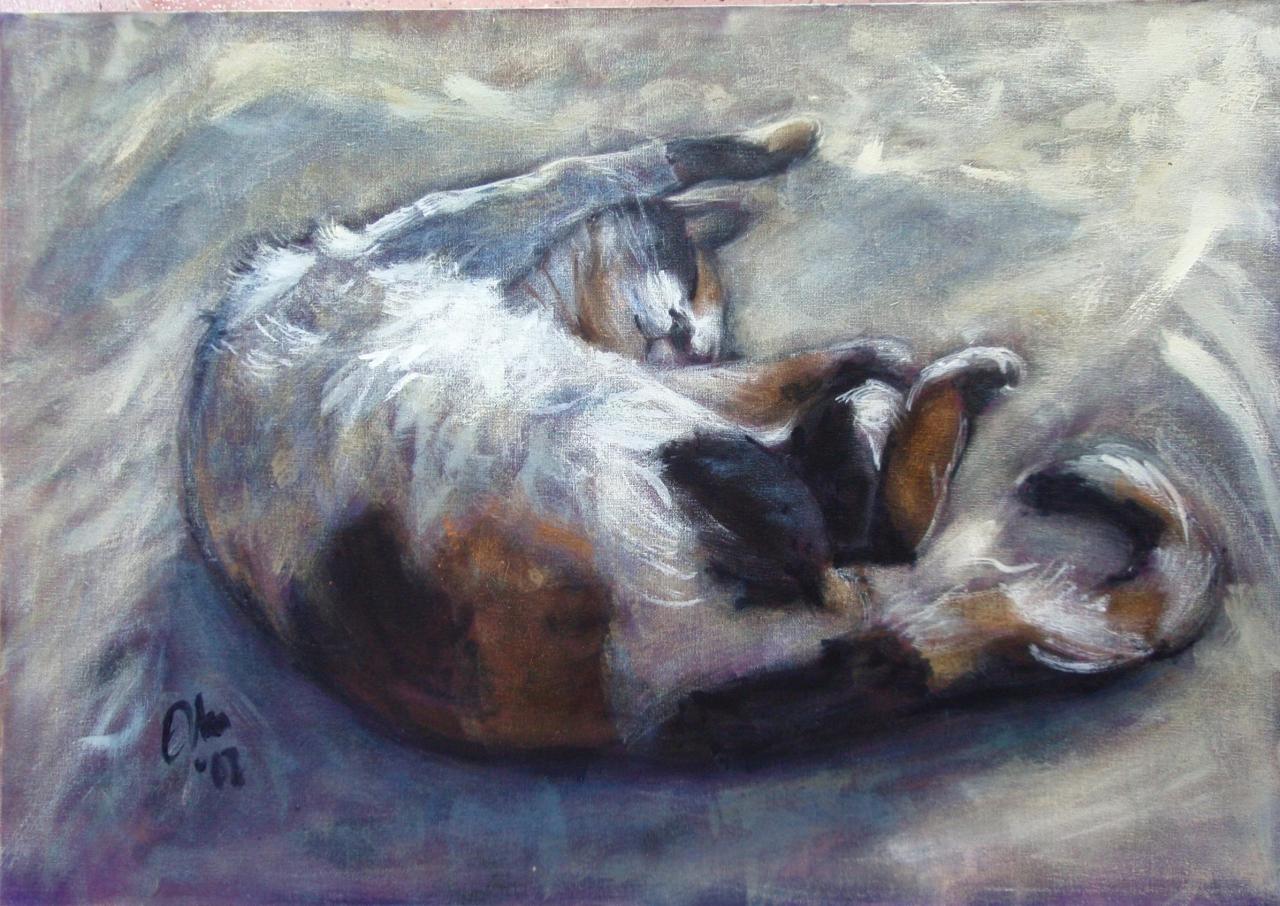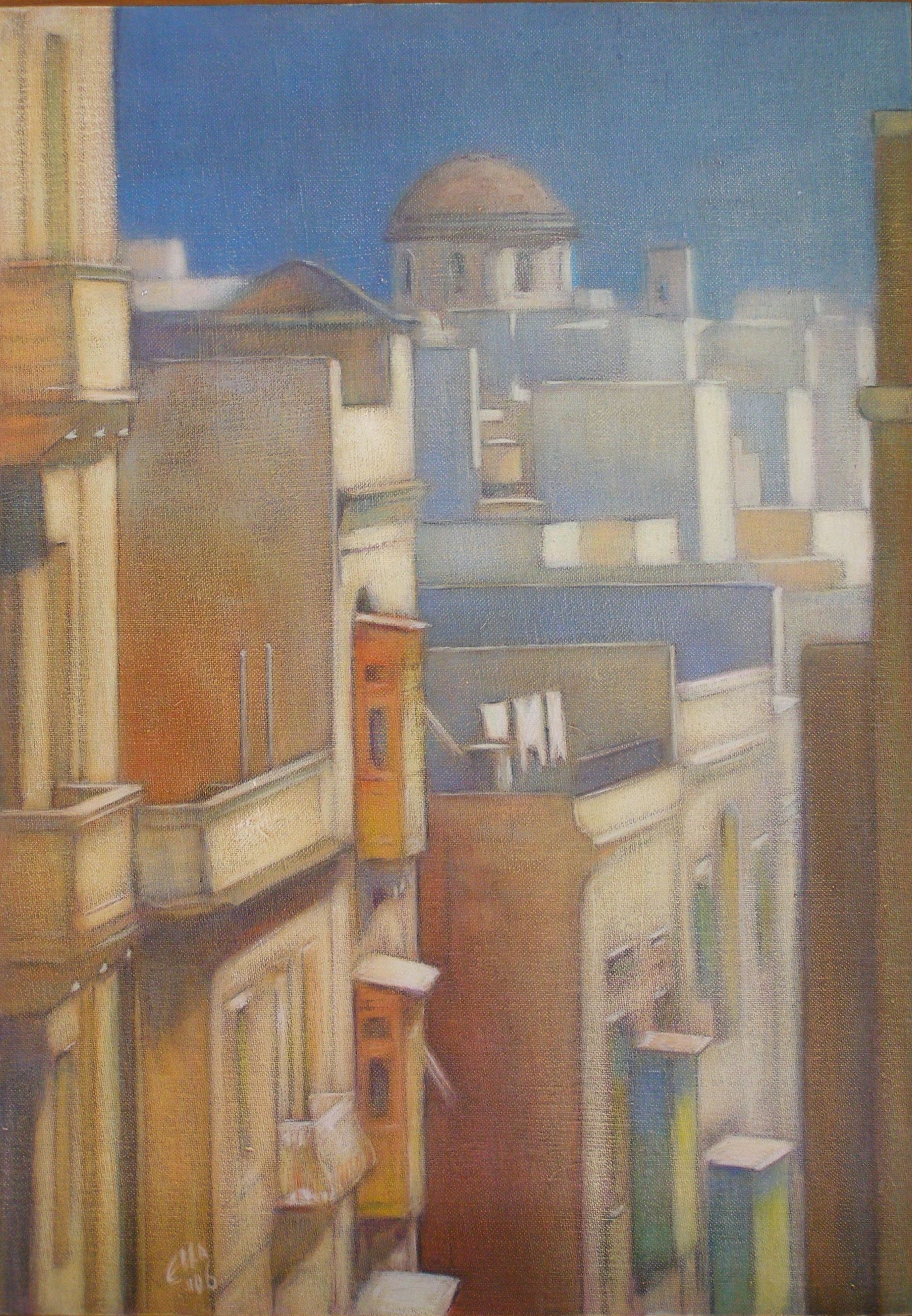Pharmacist by profession and artist at heart
by Marika Azzopardi
Strictly speaking I should be interviewing a pharmacist. And yet, the first thing I get to see are canvases of paintings – beautifully and delicately made scenes of Maltese corners. Not the usual tourist scenes which just about every other artist attempts to experiment with now and again, but snippets of curiosity eked out of your average Maltese streetscape. When considering a ‘pjazza’ this artist does not take in the architectural details facades, but rather hones in on the most innocuous and probably ignored element of all, focusing on it so intently that it acquires independent aplomb. This is the art of Maria Rossella Dalmas, a pharmacist by profession and an artist at heart.
Maria Rossella Dalmas has been a community pharmacist ever since she graduated in 1971. The course included 18 students only four of which were male. “There were not many options available at the time. I wanted to become an archaeologist but had to be practical about my choice of career. Archaeology was not considered as an area of study that would earn a woman her livelihood. So it had to be either pharmacy or teaching. Of course I could try becoming a doctor which I absolutely didn’t want, or attempt to take up law and become a lawyer which was another no-go area for me. Ultimately I settled for pharmacy.”
The choice to become a pharmacist seems to have completely jarred with Mrs Dalmas’s natural predisposition for all artistic things. Her father, the late Giuseppe Cassar, was a well-known watercolourist and photographer who inspired her strongly, as did the rest of her artistic relations. From doodling her way through her school days and filling the edges of copybooks with anything that came to her fanciful thoughts, she went on to closely observe the way her father painted as well as the way her aunts combined paint with monochrome photography. “They used transparent oil colours on a sepia base and livened up the flesh colours on face and hands in portraits. The style was very much in vogue and my own graduation portrait is done up like that. I still remember the strong smell of turpentine as they worked.”
Today she uses acrylics rather than water colours or oils. She finds these are extremely practical and fast-drying, something which fits excellently with her own fast-paced and busy lifestyle. “There is always very little time to spare in my life, so acrylics it has to be! My father had first bought me poster colours which I didn’t particularly like but every child used poster colours to paint back then. I just moved on to acrylics and stayed on using them.”
Maria Rossella Dalmas has refined both skill and technique to a point where her streetscapes are imbued with soft colours and uncanny diffusion of light. Canvases are generally extremely smooth-textured and unimpeded by evident brushstrokes, so that her captive moments in time are particularly delicate in quality.
Her last solo exhibition was in June 2007 at Valletta’s National Museum of Fine Arts. “I am preparing for another exhibition at the Fine Arts which will be held in November 2011. I feel that my style slowly evolves as I work and am happy with what I have developed. I have moved away from emulating my father’s watercolour compositions and now have my distinct style. I know where I want to go and I believe I am making headway in the right direction. But I hope I will never say I have reached my zenith because that would mean a dead-end.”
What about pharmacy? How did that change over time and all through these years in the profession? “There have been many, too many changes. We have so many more medicines now than when I was studying or when I started off. Certainly this is owed to great progress in medicine and science. Several things we learnt at University have never been utilised and ultimately there is a big difference between what you are taught and what you use as a community pharmacist. Then again a lot of what we were taught has since been proved wrong. I distinctly remember learning that the intact epidermis is a natural barrier to all sort of medication and that nothing passes through it. That is absolute crap now of course and transdermal patches prove this beyond doubt. Patches are now imbued with all sorts of medications – from nicotine to HRT.”
Maria Rossella Dalmas speaks of the requirements of being a good pharmacist, chief of which is the ability to reach out to customers, especially in village pharmacies. “People vary considerably from village to village and from town to village – in the way they speak and reason, and the way they relate to you and treat you. Valletta is an in-between locality, but then you get thrown in at the extremes and that is where the strident differences in people’s mentalities and dispositions transpire. Some villagers, especially of the older generation, are not particularly touched by the new levels of education and stick to the old methods which they learnt in their own way. They look to the pharmacist as a consultation post before approaching the doctor. Having said that, they will even trust a pharmacist to the extent of sharing confidential information and trust us implicitly in whatever is related to health matters as well as private affairs, even bringing in personal documents to be read out! We are on the front line always.”




